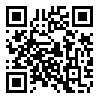Sat, Dec 6, 2025
[Archive]
Volume 13, Issue 1 (Winter 2022)
Caspian J Intern Med 2022, 13(1): 122-126 |
Back to browse issues page
Download citation:
BibTeX | RIS | EndNote | Medlars | ProCite | Reference Manager | RefWorks
Send citation to:



BibTeX | RIS | EndNote | Medlars | ProCite | Reference Manager | RefWorks
Send citation to:
Dehghan Manshadi S A, Sedaghat M, Mohammadhashem F, Salehi M, Mohammadnejad E, Seifi A et al . Knowledge and perception of hand hygiene: A survey using WHO standardized tools in Tehran, Iran. Caspian J Intern Med 2022; 13 (1) :122-126
URL: http://caspjim.com/article-1-2680-en.html
URL: http://caspjim.com/article-1-2680-en.html
Seyed Ali Dehghan Manshadi 

 , Mojtaba Sedaghat
, Mojtaba Sedaghat 

 , Fatemeh Mohammadhashem
, Fatemeh Mohammadhashem 

 , Mohammadreza Salehi
, Mohammadreza Salehi 

 , Esmaeil Mohammadnejad
, Esmaeil Mohammadnejad 

 , Arash Seifi *
, Arash Seifi * 

 , Arezoo Salami Khaneshan
, Arezoo Salami Khaneshan 




 , Mojtaba Sedaghat
, Mojtaba Sedaghat 

 , Fatemeh Mohammadhashem
, Fatemeh Mohammadhashem 

 , Mohammadreza Salehi
, Mohammadreza Salehi 

 , Esmaeil Mohammadnejad
, Esmaeil Mohammadnejad 

 , Arash Seifi *
, Arash Seifi * 

 , Arezoo Salami Khaneshan
, Arezoo Salami Khaneshan 


Department of Nursing and Midwifery, Tehran University of Medical Sciences, Tehran, Iran , a-seifi@sina.tums.ac.ir
Abstract: (5712 Views)
Background: Proper hand hygiene is the most important action in preventing healthcare-associated infections (HCAIs). In this study, the knowledge and perception of hand hygiene assessed among nurses as the most exposed personnel to patients.
Methods: In this analytical cross-sectional study, the nurses working in different wards of a collegiate tertiary hospital in Tehran were investigated by standardized WHO questionnaires.
Results: Of the 101 participating nurses 89 (88.1%) were females. 81 (80.2%) had received formal related training. The 69 respondents estimated the mean prevalence of HCAI to be 38.91% and 98 (97.1%) considered hand hygiene an effective prevention in this regard. 78 (77.3%) perceived hand hygiene as the center priority; 82, 83 and 79 of participants would think that good hand hygiene matters for their superiors, colleagues and patients, respectively. The practice of hand hygiene was stated to be difficult by 48 (47.5%) respondents. There was no significant difference in self-reporting of hand hygiene practice among nurses in age (P=0.68), the degree of education (P=0.574), work experience (P=0.64), nor their wards (P=0.131). There was a significant reverse relationship with the supposed difficulty level of doing hand hygiene (P=0.049). The mean score of the nurses' knowledge was 66.53 (±9.41) based on the answers to the questions of the knowledge questionnaire.
Conclusion: Knowledge and perception of hand hygiene, as this study showed, might not to be satisfactory; therefore, planning to improve these indicators and regular monitoring using standard tools is necessary for all healthcare centers.
Methods: In this analytical cross-sectional study, the nurses working in different wards of a collegiate tertiary hospital in Tehran were investigated by standardized WHO questionnaires.
Results: Of the 101 participating nurses 89 (88.1%) were females. 81 (80.2%) had received formal related training. The 69 respondents estimated the mean prevalence of HCAI to be 38.91% and 98 (97.1%) considered hand hygiene an effective prevention in this regard. 78 (77.3%) perceived hand hygiene as the center priority; 82, 83 and 79 of participants would think that good hand hygiene matters for their superiors, colleagues and patients, respectively. The practice of hand hygiene was stated to be difficult by 48 (47.5%) respondents. There was no significant difference in self-reporting of hand hygiene practice among nurses in age (P=0.68), the degree of education (P=0.574), work experience (P=0.64), nor their wards (P=0.131). There was a significant reverse relationship with the supposed difficulty level of doing hand hygiene (P=0.049). The mean score of the nurses' knowledge was 66.53 (±9.41) based on the answers to the questions of the knowledge questionnaire.
Conclusion: Knowledge and perception of hand hygiene, as this study showed, might not to be satisfactory; therefore, planning to improve these indicators and regular monitoring using standard tools is necessary for all healthcare centers.
Policy Brief: Short Communication |
Subject:
Infectious Diseases
Received: 2021/01/1 | Accepted: 2021/04/5 | Published: 2022/01/10
Received: 2021/01/1 | Accepted: 2021/04/5 | Published: 2022/01/10
Send email to the article author
| Rights and permissions | |
 |
This work is licensed under a Creative Commons Attribution-NonCommercial 4.0 International License. |




